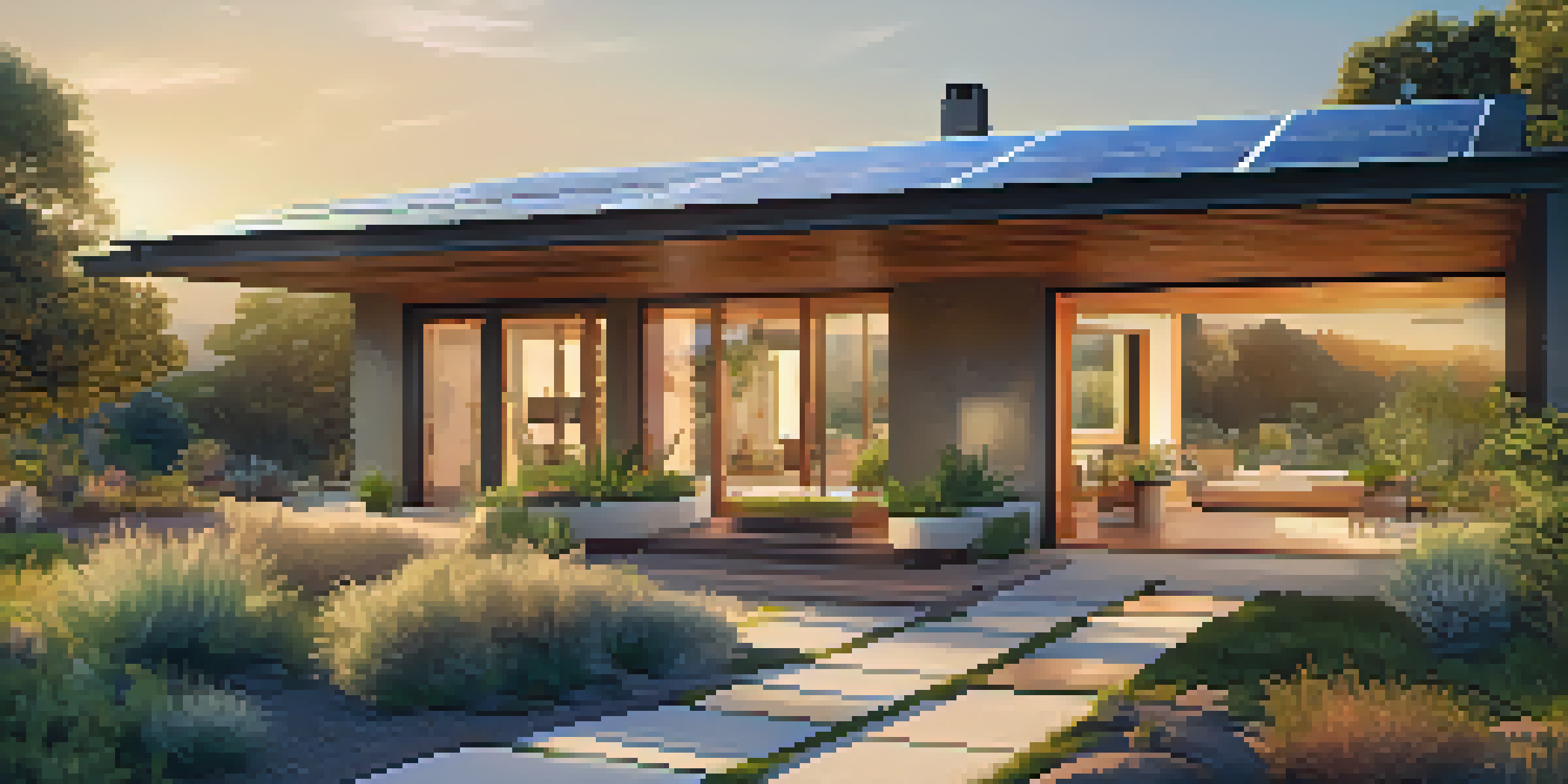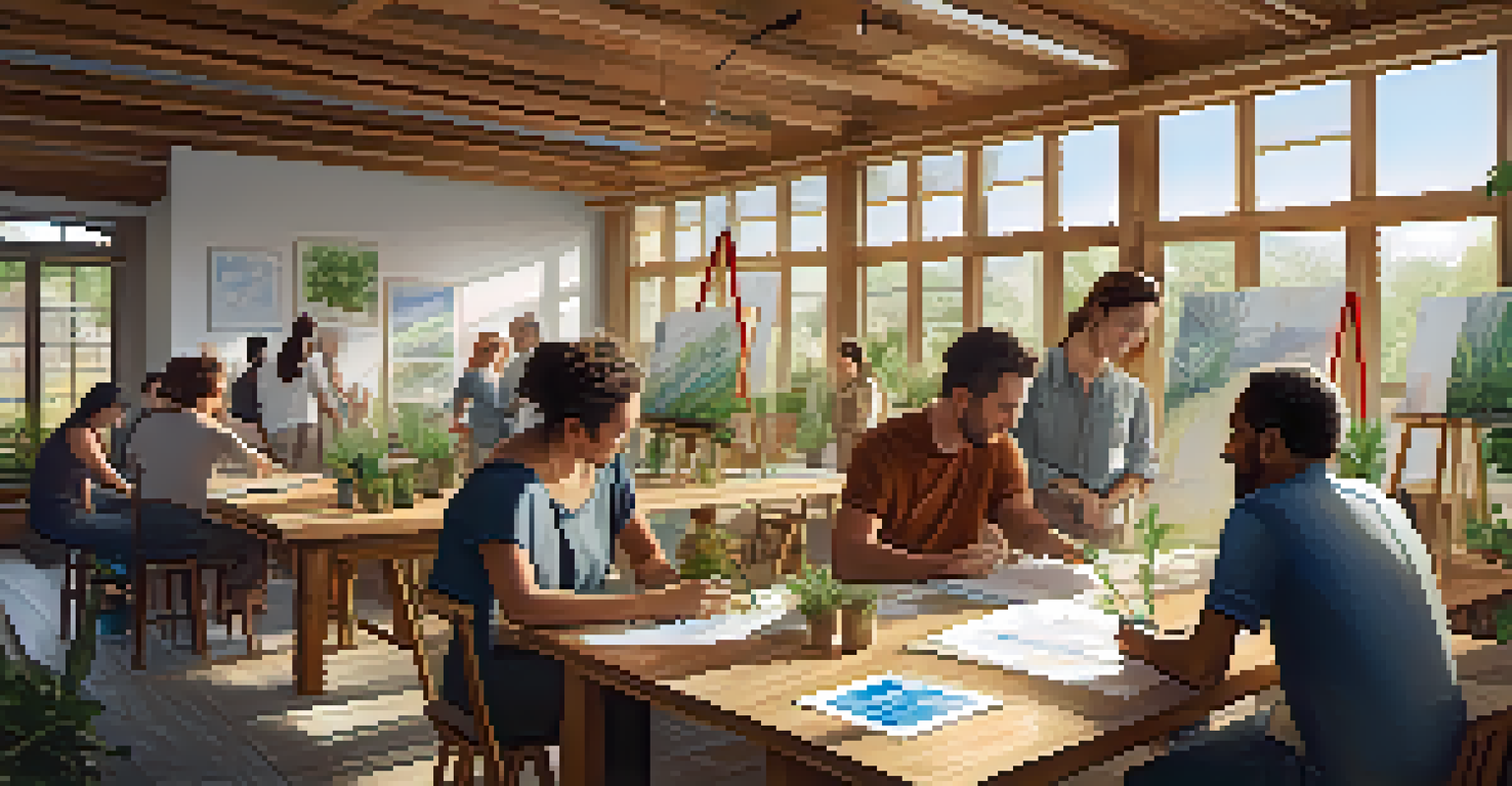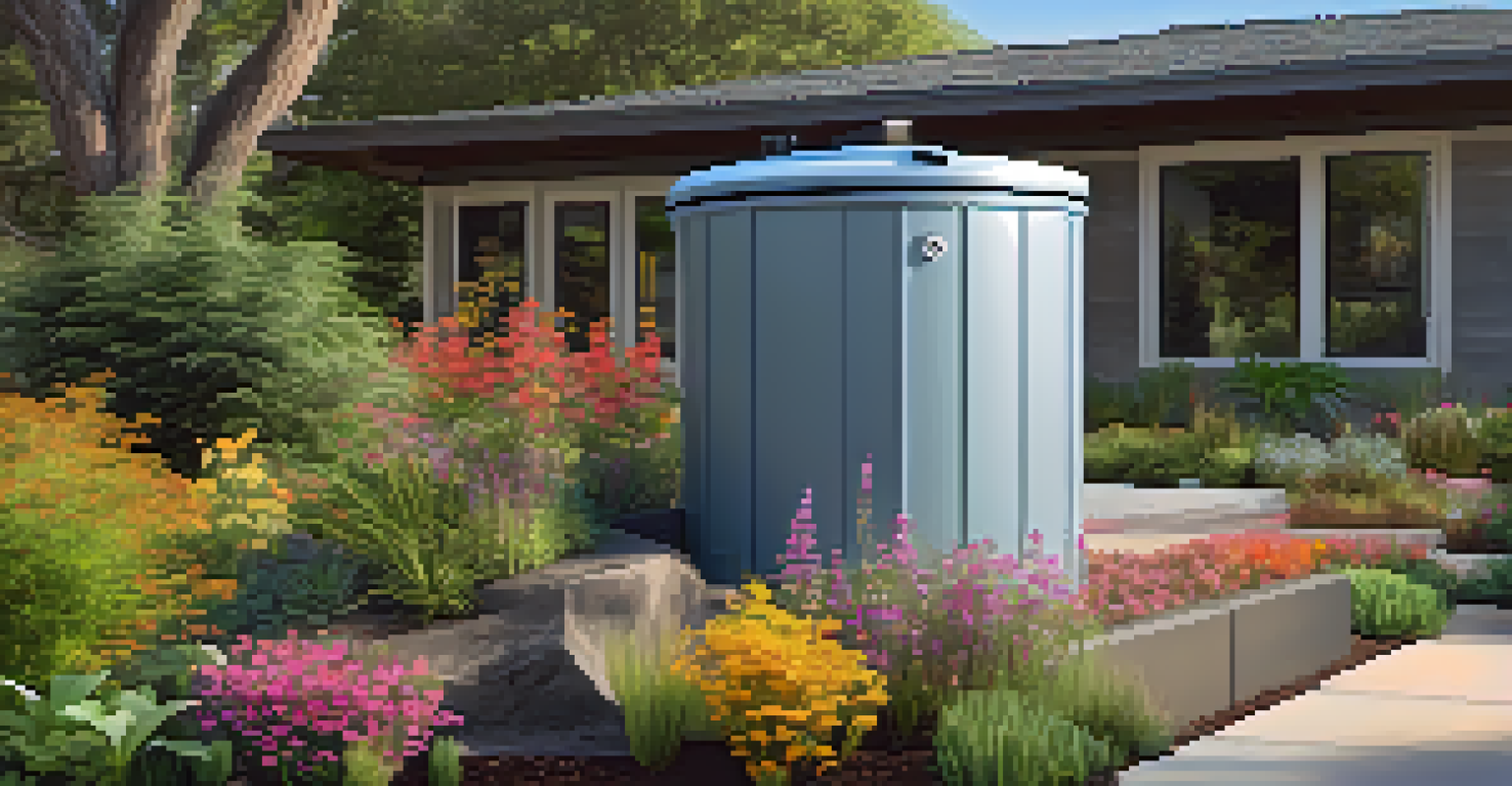Sustainable Architecture: Green Building Trends in Carlsbad

Understanding Sustainable Architecture and Its Importance
Sustainable architecture refers to designing buildings that are environmentally responsible and resource-efficient. This approach not only minimizes the negative impact on the environment but also enhances the quality of life for its occupants. With growing concerns about climate change and resource depletion, sustainable architecture has become more critical than ever.
Sustainability is not a destination; it's a journey that requires continuous improvement and innovation.
In Carlsbad, this trend is particularly relevant due to the city’s commitment to preserving its natural beauty and promoting eco-friendly practices. By integrating sustainability into building designs, architects can create structures that harmonize with their surroundings while also reducing energy consumption. This not only benefits the environment but can also lead to significant cost savings for homeowners and businesses.
Moreover, sustainable architecture often involves using renewable resources, energy-efficient systems, and innovative materials. These practices not only contribute to a healthier planet but also create spaces that are more comfortable and functional. As Carlsbad continues to grow, embracing sustainable architecture will be key to ensuring a prosperous and eco-conscious future.
Renewable Energy Solutions in Carlsbad Buildings
One of the driving trends in sustainable architecture is the integration of renewable energy sources. In Carlsbad, we see an increasing number of buildings equipped with solar panels and wind turbines. These technologies harness natural energy to power homes and businesses, significantly reducing reliance on fossil fuels.

For instance, many new residential projects in Carlsbad are designed with solar energy in mind, often featuring solar roofs that can generate enough electricity to power the home. This not only lowers utility bills but also contributes to the city’s overall sustainability goals. Additionally, the use of energy storage systems allows homeowners to store excess energy for later use, further enhancing efficiency.
Sustainable Design Enhances Living
Sustainable architecture improves environmental responsibility and enhances the quality of life for building occupants.
By incorporating renewable energy solutions, Carlsbad is setting an example for other cities. The shift towards clean energy not only supports the local economy by creating green jobs but also aligns with global efforts to combat climate change. As more residents and businesses adopt these technologies, the benefits will extend beyond individual properties to the community as a whole.
Eco-Friendly Materials: A Key Component in Design
The use of eco-friendly materials is another significant trend in sustainable architecture. Carlsbad architects are increasingly opting for sustainable building materials, such as bamboo, reclaimed wood, and recycled metal. These materials not only have a lower environmental impact but also add unique aesthetic qualities to buildings.
The greatest threat to our planet is the belief that someone else will save it.
For example, using reclaimed wood for flooring or cabinetry not only reduces waste but also adds character to a home. Similarly, bamboo is a rapidly renewable resource that can be used for everything from flooring to furniture. By choosing these materials, builders are minimizing their carbon footprint while creating beautiful spaces that reflect a commitment to sustainability.
Moreover, many of these eco-friendly materials can improve indoor air quality, which is an essential aspect of sustainable living. Low-VOC (volatile organic compounds) paints and finishes, for instance, reduce harmful emissions in the home. As more builders in Carlsbad prioritize these materials, we can expect to see healthier and more environmentally conscious living spaces.
Water Conservation Strategies in Modern Architecture
Water conservation is increasingly becoming a priority in sustainable architecture, especially in regions like Carlsbad where water resources can be scarce. Innovative designs now incorporate rainwater harvesting systems, greywater recycling, and drought-resistant landscaping. These strategies not only conserve water but also help to create sustainable ecosystems.
For example, rainwater harvesting systems collect and store rainwater for irrigation and other non-potable uses. This reduces the demand on municipal water supplies and promotes responsible water use. Greywater recycling systems, which repurpose water from sinks and showers, further enhance water efficiency in homes.
Renewable Energy Drives Innovation
Integrating renewable energy solutions like solar panels in Carlsbad buildings reduces reliance on fossil fuels and supports local sustainability goals.
In addition to these systems, using native and drought-tolerant plants in landscaping can significantly reduce water usage. Carlsbad residents are increasingly opting for xeriscaping, which requires minimal irrigation and promotes local biodiversity. By implementing these water conservation strategies, the community is taking significant steps toward a more sustainable future.
The Role of Smart Technology in Green Buildings
Smart technology is revolutionizing the way we think about sustainable architecture. In Carlsbad, many new buildings are being equipped with smart home systems that optimize energy use and enhance comfort. These technologies allow homeowners to monitor and control their energy consumption remotely, leading to significant savings.
For instance, smart thermostats can learn a homeowner’s habits and adjust heating and cooling accordingly, ensuring energy isn’t wasted when a home is empty. Smart lighting systems can also automatically turn off when no one is in the room, further conserving energy. These technologies are not only convenient but also contribute to a more sustainable lifestyle.
As smart technology continues to evolve, its integration into sustainable architecture will become even more seamless. Carlsbad is at the forefront of this trend, embracing innovation to create homes that are not only eco-friendly but also equipped for the future. This marriage of technology and sustainability paves the way for smarter, greener living.
Community Engagement in Sustainable Development
Community engagement plays a pivotal role in the success of sustainable architecture in Carlsbad. Local residents, architects, and city officials are collaborating to promote green building initiatives that align with the values of the community. This collaborative effort helps to ensure that sustainable practices are not only adopted but embraced.
For example, the city hosts workshops and forums to educate residents about the benefits of sustainable building practices. These events encourage dialogue and allow community members to share ideas and experiences. By fostering a culture of sustainability, Carlsbad is empowering its residents to make informed decisions about their buildings and the environment.
Community Engagement Fuels Growth
Active community participation in sustainable initiatives helps shape effective green building practices in Carlsbad.
Moreover, community engagement can lead to innovative solutions tailored to local needs. When residents are actively involved in the planning process, they can provide valuable insights that help shape sustainable development projects. This inclusive approach not only strengthens community bonds but also creates a sense of ownership over local sustainability efforts.
The Future of Sustainable Architecture in Carlsbad
As we look to the future, sustainable architecture in Carlsbad is poised for growth. With increasing awareness of environmental issues and a strong community commitment to sustainability, the demand for green building practices is expected to rise. This trend will likely lead to more innovative designs and technologies tailored to the unique needs of the area.
Moreover, as local policies continue to support sustainable development, builders and architects will have even more incentives to incorporate green practices into their projects. This may include tax breaks for using renewable energy sources, grants for energy-efficient upgrades, and streamlined permitting processes for eco-friendly designs.

In conclusion, Carlsbad stands at a crucial juncture in its architectural evolution. By continuing to prioritize sustainability, the city can set an example for others and ensure a healthier environment for generations to come. The future of sustainable architecture in Carlsbad is bright, and it promises to be both innovative and inspiring.